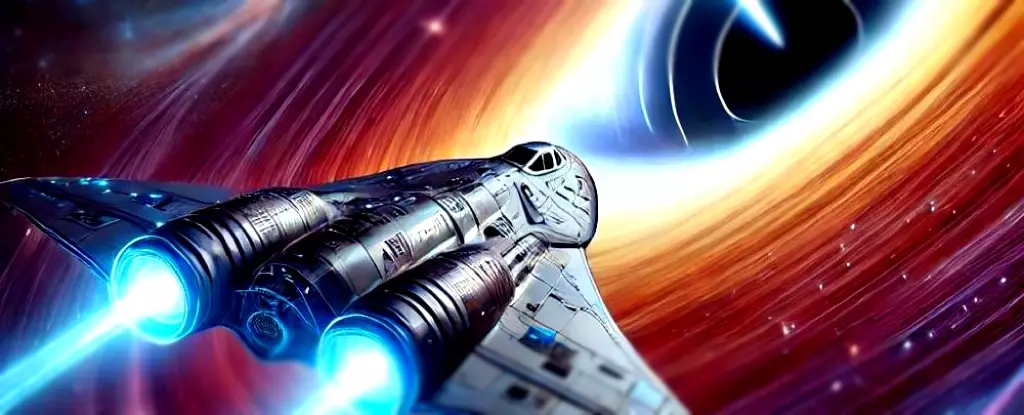The concept of warp drives has been a staple in science fiction for decades, originating from writer John Campbell’s novel “Islands of Space.” Widely popularized by franchises like Star Trek, warp drives have become synonymous with superliminal travel through hyperspace. However, in reality, the existence of warp drives remains purely theoretical and is a subject of ongoing research in the field of physics.
Recently, researchers Remo Garattini and Kirill Zatrimaylov delved into the intriguing thought experiment of how a ship equipped with warp drive would fare near a black hole. Their study proposed that a ship with warp drive could potentially survive inside a Schwarzschild black hole, provided it crossed the event horizon at a speed slower than that of light. The gravitational field of the black hole could potentially reduce the negative energy requirements necessary for the functioning of the warp drive.
By examining the mathematical implications of such a scenario, Garattini and Zatrimaylov hinted at the potential for creating mini-warp drives in laboratory conditions. While the idea of constructing a full-scale warp drive presents numerous challenges, the concept of miniaturizing the technology opens up new possibilities for future research and experimentation.
The concept of warp drives faces significant hurdles based on our current understanding of physics. Generating the immense energy required to power a warp field is a considerable obstacle, with the need for exotic materials such as “unobtanium” posing a major challenge. Moreover, the idea of warping spacetime to achieve faster-than-light travel raises questions about the fundamental laws of physics governing our universe.
In their study, Garattini and Zatrimaylov focused on Schwarzschild black holes, which serve as ideal models for exploring the interaction between warp drives and gravitational forces. By combining equations related to black holes and warp drives, the researchers discovered the potential for embedding warp drives within the outer regions of black holes, leading to intriguing hypotheses about the nature of spacetime manipulation.
While the theoretical framework proposed by Garattini and Zatrimaylov offers tantalizing possibilities for the future of warp drive technology, numerous challenges and unanswered questions remain. The potential creation of mini-warp drives in laboratory settings hints at the transformative impact this research could have on our understanding of spacetime and interstellar travel.
The exploration of warp drives and their interaction with black holes represents a frontier of theoretical physics with immense potential for groundbreaking discoveries. While the road to practical warp technology may be long and fraught with obstacles, the theoretical frameworks developed by researchers like Garattini and Zatrimaylov pave the way for further investigations into the mysteries of spacetime and faster-than-light travel. As we continue to push the boundaries of our understanding of the universe, the prospect of one day traveling through black holes via warp drives remains a tantalizing possibility that could reshape our conception of space exploration.

Leave a Reply